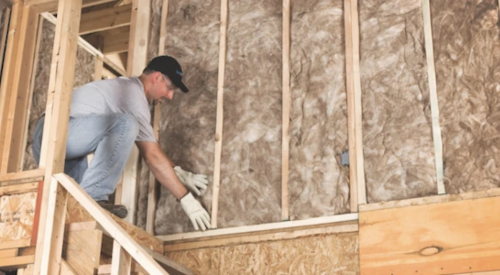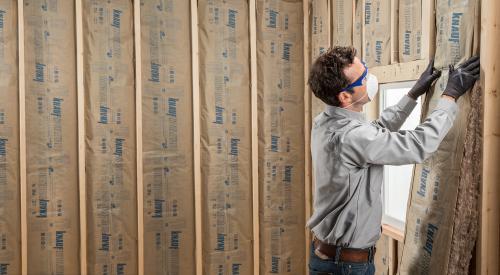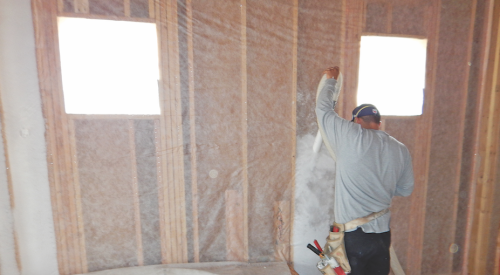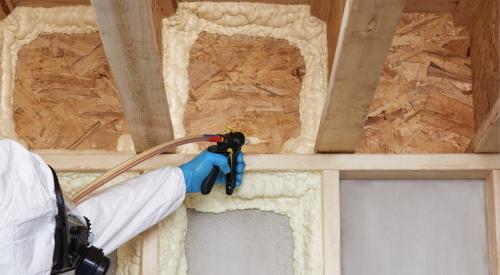In response to market demands for spray-in insulation products, which offer increased energy efficiency because they fill gaps better than batt insulation, Johns-Manville has introduced a new type of spray-in fiberglass insulation.
JM's Spider, in contrast with fiberglass blown-in blanket systems (BIBS), doesn't require applying netting across stud cavities to hold in loose insulation. The insulation sprays in quickly, filling a typical wall cavity in 10 to 20 seconds, the company says. As it is sprayed, the fiberglass fibers mix with a non-toxic adhesive that dries fully in two to eight hours. Excess insulation gets vacuumed up and fed right back into the sprayer for instant reuse.
Spider reaches R-values of 15 in 2x4 cavities and 23 in 2x6, the company says, which helps save homeowners money on their energy bills, but it does carry a 20 percent to 25 percent higher price premium over fiberglass batt. In addition to its energy-efficiency benefits, JM product stewardship manager Tim Carey says it's a good green-building choice because its fast-drying time mitigates the risk of mold and mildew, and it uses a formaldehyde-free binder.
That material choice may be a significant one for the insulation industry, considering the June 15 announcement made by the International Agency for Research on Cancer, which is part of the World Health Organization. It classified formaldehyde, a common binder for fiberglass insulation, as "carcinogenic to humans" (the substance was formerly classified as "probably carcinogenic").












